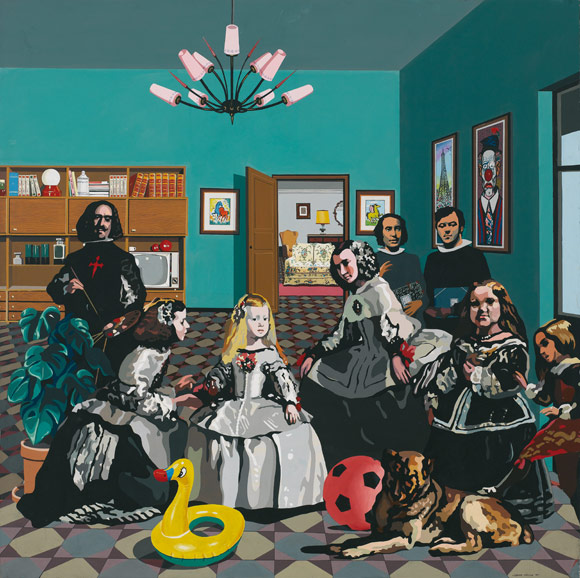Pop Art is one of the most liberating moments in art that appears in the late 1950s and early 1960s. This kind of art shows us the new culture of technology and consumerism, it put an end to the division between high and low culture. In Pop Art any object could become art. Even if it is a modern movement, Pop Art is inspired by modern life/culture (advertisings, comics) but also by tradition and classic art (they still using the same tools as in the past).
Collage, Avertising and Comics:
Collage in Pop Art is inspired by cubism and dadaism. It was the americans Roy Lichtenstein and Andy Warhol who first transform a comic page into a large painting.
 |
| comic |
 |
| collage |
Emblems:
 |
| Coca-Cola - Andy Warhol |
 |
| Campbell's tomato soup |
In the late 1950s, Jasper Johns wanted to show something different as brand names and products to push people to consunmpption society, so he started to represent everyday life objects. Warhol imitated him some times afterwards, representing also logos and tradecamp: Coca-Cola, Campbell's soup cans, etc...
Myths:
 |
| Marilyn Monroe - Andy Warhol |
Hollywod was a place were many myths were created: Marilyn Monroe, James Dean, Marlon Brando, most of them became idols for the public, that is why they appeared in many Pop Art creations. Andy Warhol and Alex Katz were the first Pop Artists to try this new topic. British Pop Artists created their own myths (Hamilton's Rolling Stone) and they also combine worldwide idols with their culture.
Portraits:
 |
| Andy Warhol - Self-Portrait in Drag |
When Pop Art appears it brought the reinterpretation, that means that portraits were again on top. It is based on the traditional form of portrait in which representation no loger follows reality, Warhol marks the turning point because the model fades away and become a virtual image. Many artists also tried self-portraid and the way reflection can make a portrait and how real could it be. In this topic the rules of traditional art are broken, because we don't see reality, we see an approach of it.
Landscapes, Interiors and Still Lifes:
 |
| David Hockney - Arrival of Spring in Woldgate |
It appears because of the consumer culture. This topic made Pop Art return to the real world, because it shows real objects in real situations, it could even be a picture. It turns into traditional art because it is a reinterpretation of landscapes, interiors and still lifes. The genres are adapted to the modern landscapes, cultures and society. This Pop Art topic makes an private landscape or space into a commercial space just by representing it to the public.
 |
| Still Life #30 - Tom Wesselmann |
 |
| Roy Lichtenstein - Sunrise C |
Urban Eroticism:
 |
| Kneeling Woman - Allen Jones |
 |
| Roy Lichtenstein - Woman In Bath |
The transformation of social attitude and norms in the middle of the XX century brought a sexual freedom that encourage eroticism in everything around the world. So, Pop Artists wouldn't be less, and took their creations to a next level: they joined this eroticism movement and represented it in every way they could.
History Painting:
History events and contemporary affairs were an important part of Pop Art culture. It was created to appear in the media, even though some paintings aren't contemporary. Many important people like Mao Zedong, John F. Kennedy and his wife, Paul VI and others were the protagonists of a lot of projects made by Warhol, Rotella, Richter. Pop Art in Spain was used only for political causes.
 |
| Juan Genovés - Group Hug (in Franco-era) |
 |
| Mao Tse-Tung - Andy Warhol |
Art about art:
 |
Details of Renaissance Paintings
(Sandro Botticelli, Birth of Venus, 1482)
- Andy Warhol |
This Pop Art topic is an essential part of this movement, it is really close to the subject art on art. It represents the evolution of art by using traditional works and remaking them with contemporary art tools and "symbols".
 |
| Equipo Crónica - The Living Room |
.jpg)












